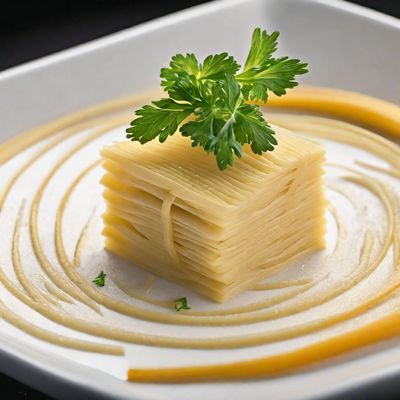
Ingredient
Milk and dairy concentrate
The Creamy Delight
Milk and dairy concentrate are derived from milk, which is a pale liquid produced by the mammary glands of mammals. They have a creamy texture, a slightly sweet taste, and a white color. Dairy concentrate is a condensed form of milk, with a thicker consistency and a more intense flavor. These ingredients are widely used in baking, cooking, and as standalone beverages.
Origins and history
Milk has been consumed by humans for thousands of years and has a rich history in various cultures. It is believed to have originated in the Middle East around 9,000 BC and spread to different parts of the world through trade and migration. Dairy concentrate, on the other hand, is a more recent development, with the process of condensing milk dating back to the 19th century. Today, milk and dairy concentrate are staples in many cuisines and are integral to the production of numerous dairy products.
Nutritional information
Milk and dairy concentrate are excellent sources of calcium, protein, and essential vitamins such as vitamin D and vitamin B12. They also provide important minerals like potassium and phosphorus. However, they can be high in saturated fat and lactose, making them less suitable for individuals with lactose intolerance or dietary restrictions.
Allergens
Milk and dairy concentrate contain lactose, which can cause allergic reactions in individuals with lactose intolerance or milk allergies.
How to select
When selecting milk and dairy concentrate, opt for products that are fresh and have a long shelf life. Check the expiration date and ensure that the packaging is intact. For dairy concentrate, choose reputable brands that offer high-quality products. If purchasing from a farmers market, look for organic or locally sourced options.
Storage recommendations
To maintain the freshness and quality of milk, store it in the refrigerator at a temperature of 40°F (4°C) or below. Keep it tightly sealed to prevent contamination and avoid storing it near strong-smelling foods. Dairy concentrate should be stored in a cool, dry place away from direct sunlight. Once opened, both milk and dairy concentrate should be consumed within a few days.
How to produce
Producing milk and dairy concentrate requires specialized equipment and processes that are typically carried out on dairy farms or in dairy processing facilities. It involves milking cows or other milk-producing animals, followed by pasteurization, homogenization, and condensation for dairy concentrate. This process is best left to professionals with the necessary expertise and equipment.
Preparation tips
Milk can be used in a variety of ways, such as in beverages like coffee, tea, or smoothies, as well as in baking recipes like cakes, cookies, and bread. It is also a key ingredient in dairy products like cheese, yogurt, and ice cream. Dairy concentrate is often used to enhance the flavor and richness of sauces, soups, and desserts. It can be reconstituted with water to create liquid milk or used directly as a concentrated ingredient.
Culinary uses
Milk and dairy concentrate are widely used in both sweet and savory dishes across many cuisines. They are essential in baking, cooking, and as standalone beverages. From creamy pasta sauces to luscious desserts, these ingredients add a delightful richness and depth of flavor to a wide range of culinary creations.
Availability
Milk and dairy concentrate are commonly available in grocery stores, supermarkets, and specialty food stores worldwide. They are also produced and consumed in various countries, including the United States, India, China, and European nations.



